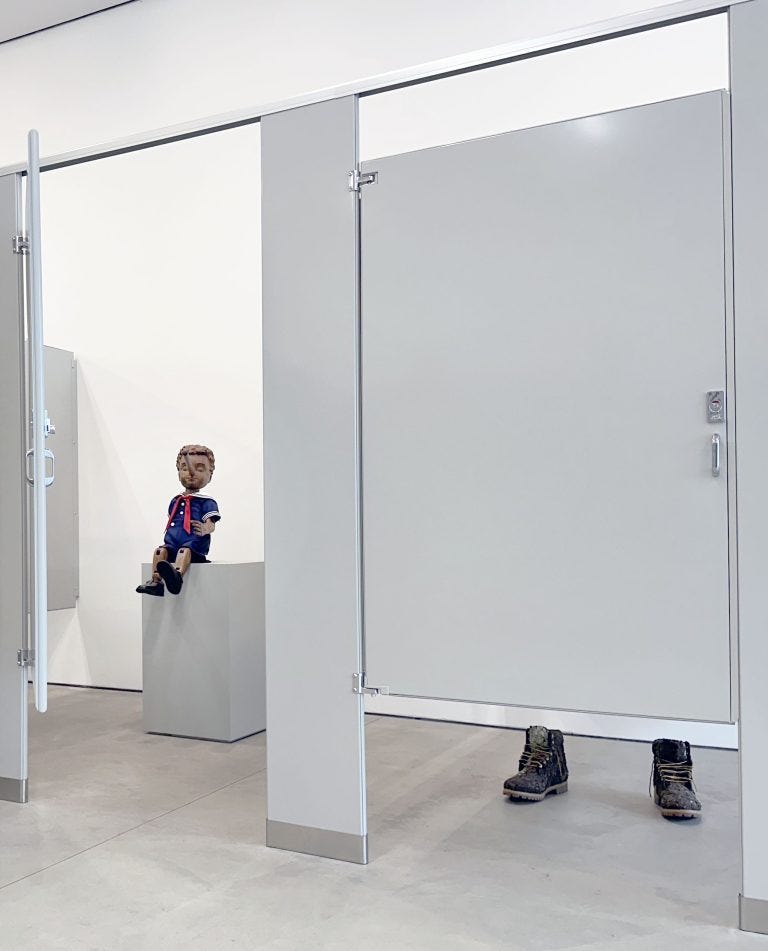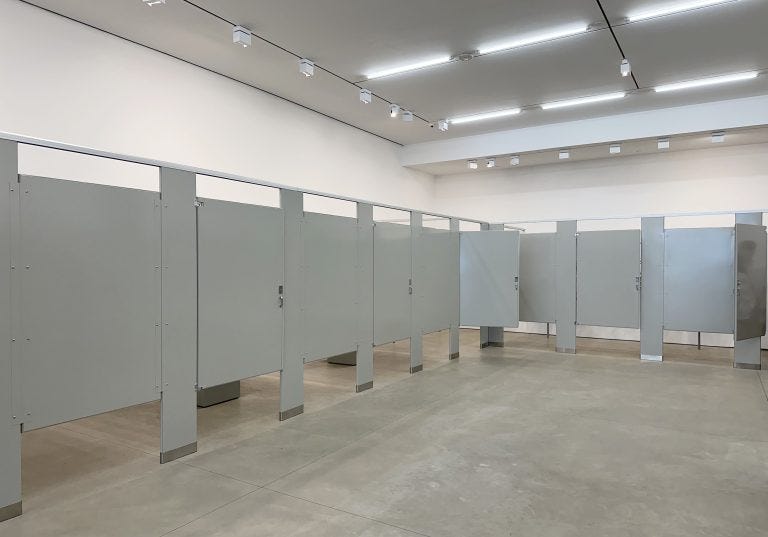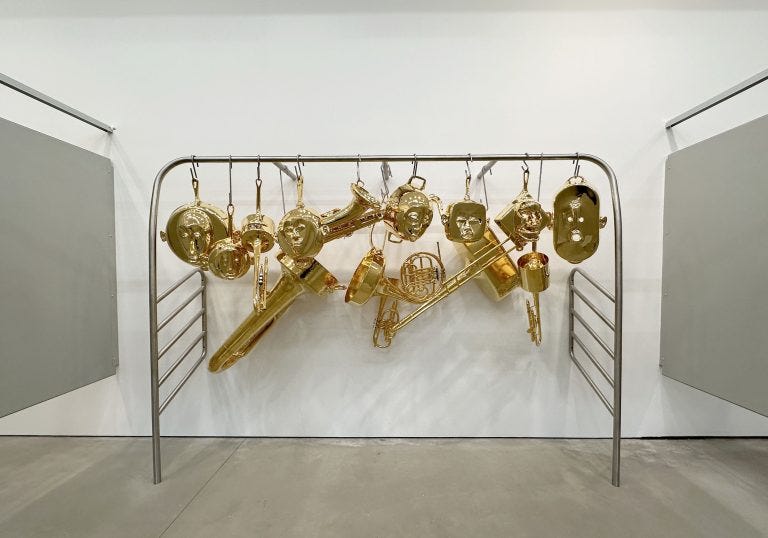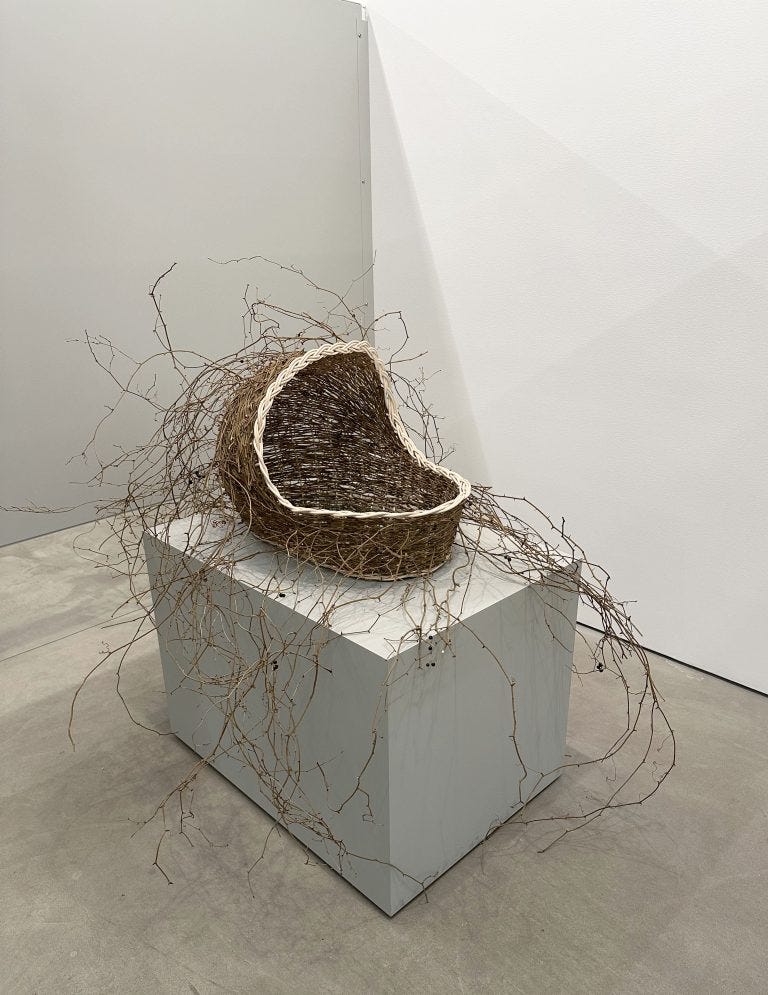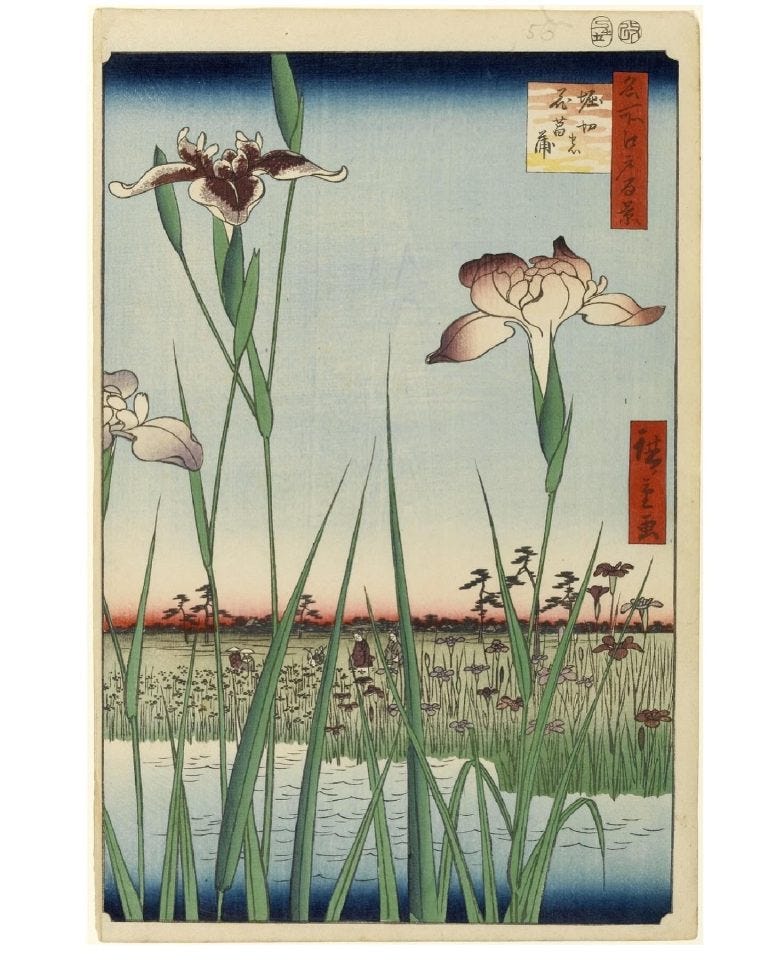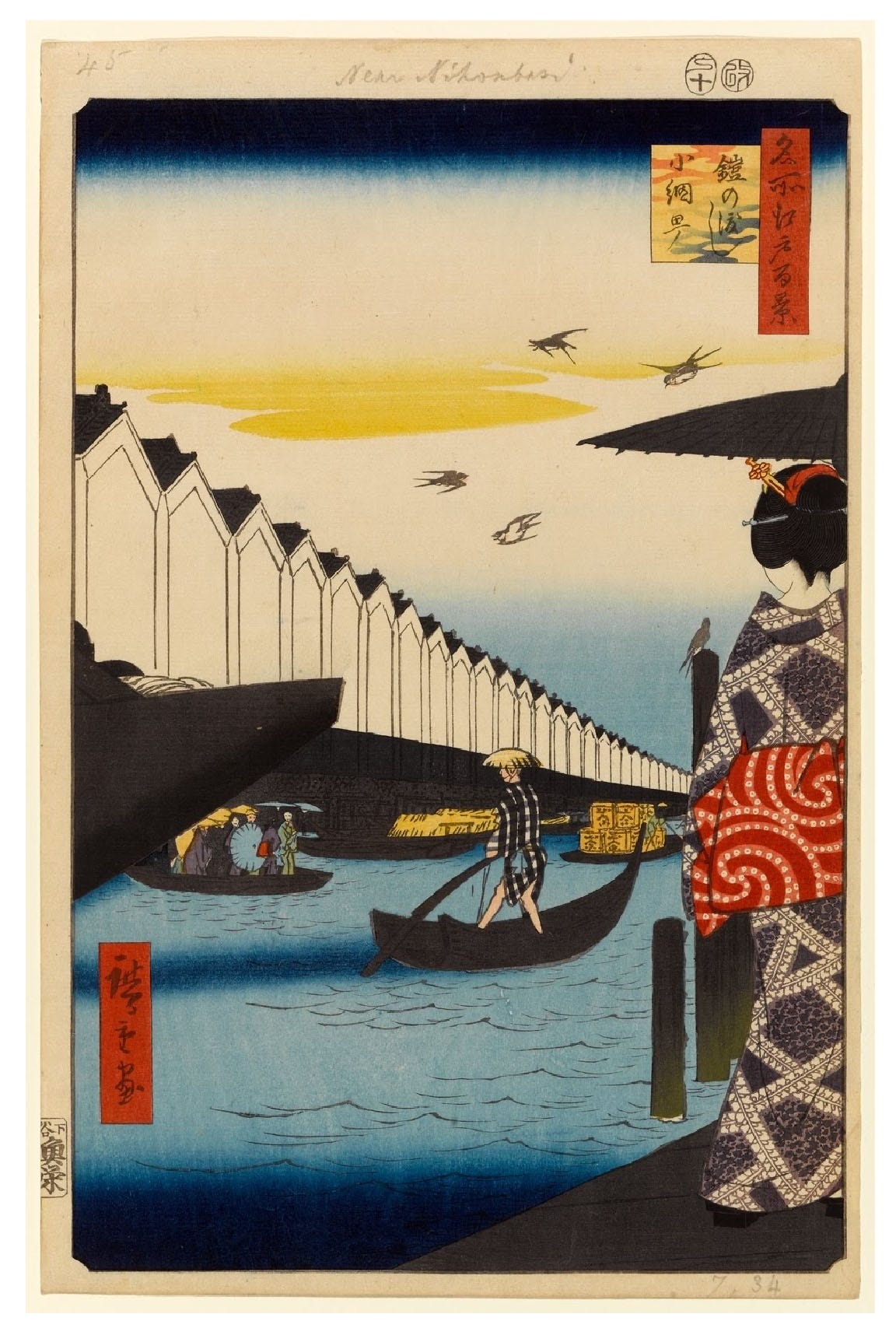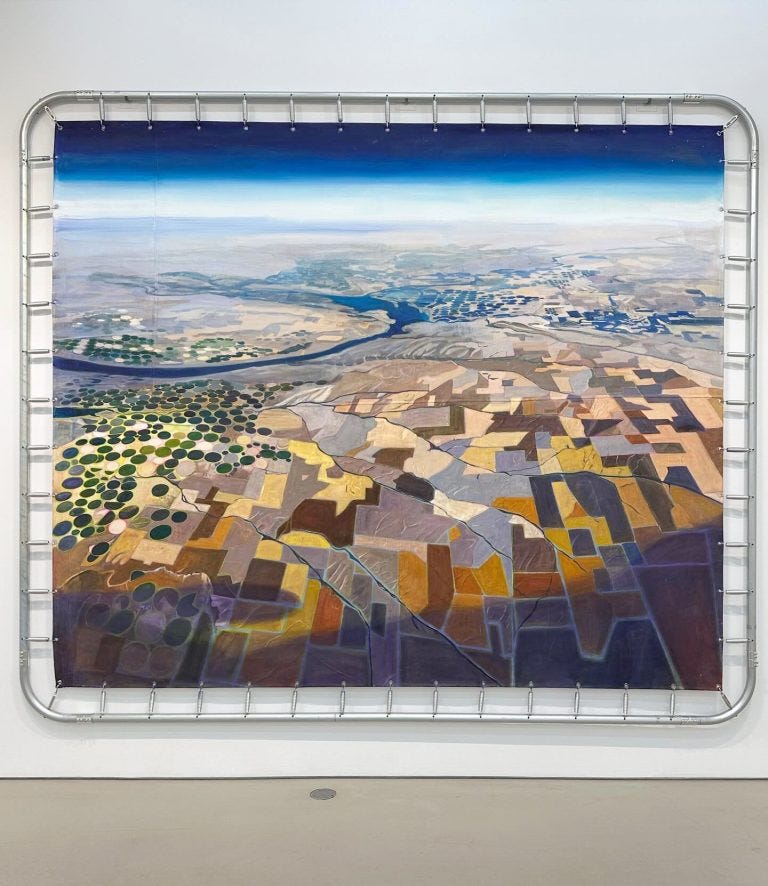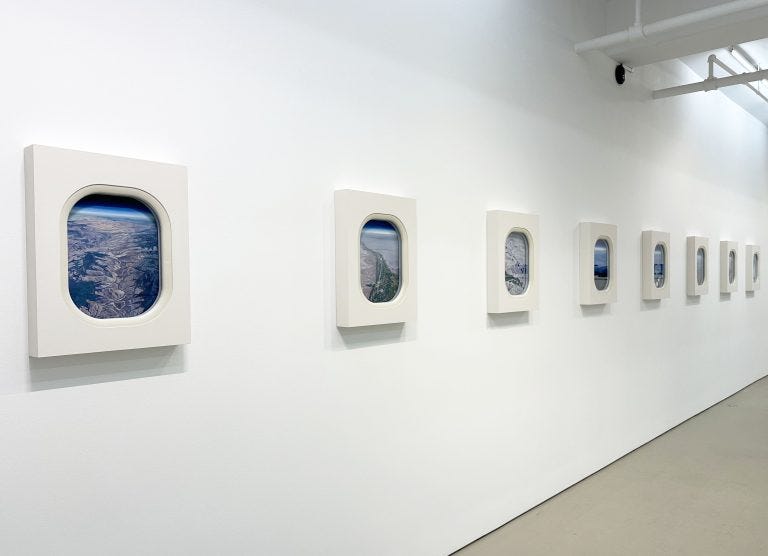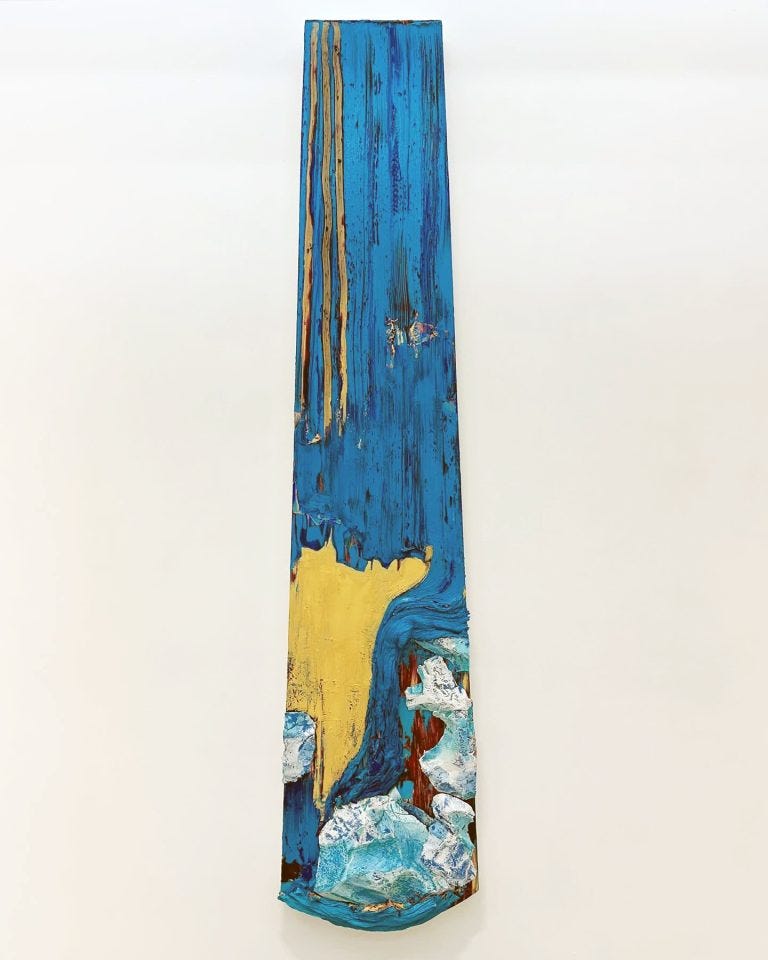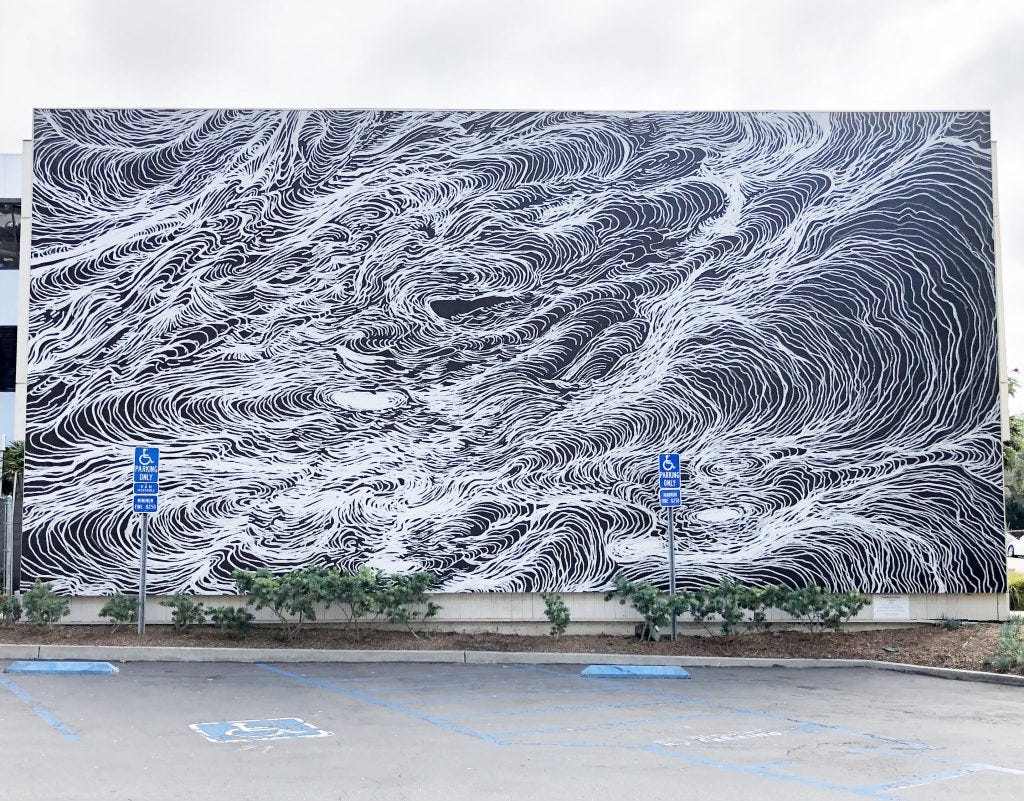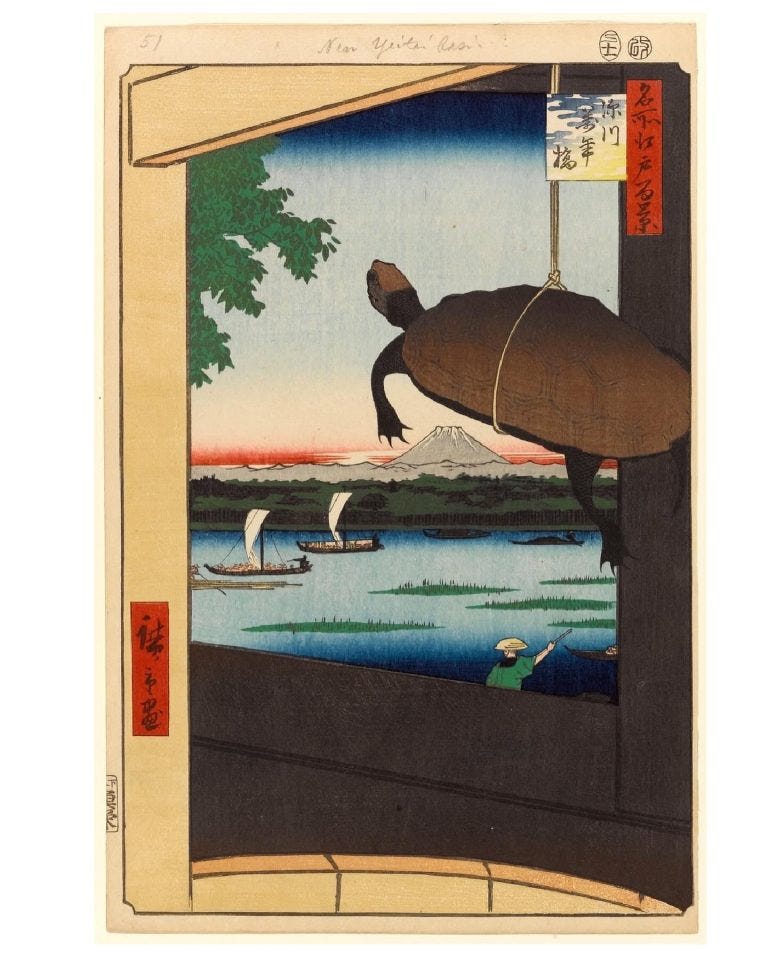
Last week on the website- Hugh Hayden’s bathroom stall doors opened to reveal a variety of surprises; Leslie Wayne captured the beauty of the world from a window seat; Utagawa Hiroshige’s prints of Edo continued to captivate; Sandra Cinto’s 2018 ocean-inspired mural made an appearance; and a small earthquake brought back memories of the fault line in one of Jessie Homer French’s “mapestries”.
And now, the recap-
For Music Monday- I posted JJ from Wand’s just released 2024 album, Vertigo. The animated video for the song was created by Vernon Chatman and lilfuchs.
August 1st, was the perfect time to post Claes Oldenburg’s Soft Calendar for the Month of August, which I had seen while visiting The Metropolitan Museum of Art. I love how the numbers are all crowded together and overlapping- the way the days of a month can sometimes feel in your memory.
Hugh Hayden’s Hughman’s exhibition at Lisson in NYC came to a close this past week. The well-crafted sculptures, hidden behind bathrooms stalls, varied in both subject and material. With each open door, the individual sculptures stand on their own with no distractions- allowing the space for subjective interpretation. Even though the topics he’s addressing- power dynamics, the American dream, identity and intimacy are serious, there’s still a playfulness to the installation.
In an interview with Art in America, Hayden provides details about some of the sculptures, as well as the reasoning behind his choices for this exhibition, and his similar one at Lisson’s Los Angeles location earlier this year.
Brooklyn Museum is one of the few institutions with a complete collection of the woodblock prints by Utagawa Hiroshige for 100 Famous Views of Edo and this year was the first time in twenty-four years they were on public display. Hiroshige’s depictions of the city in the mid-nineteenth century, transport you to the peaceful place that would one day become Tokyo. The museum included a few photos of the modern day city next to a few of his depictions for comparison.
The prints are all online and every time I scroll through them, a new one catches my eye. With the different ways he framed these scenes, his use of color, the seasons and celebrations, the waterfalls, flowers, animals, and city life- it’s hard at times not to romanticize this past world.
Of course, there is still beauty to be found in the present day, especially in nature, and in Leslie Wayne’s bodies of work for This Land at Jack Shainman Gallery, you can find it from above, as well as on the ground.
For This Land is Your Land, she painted images from her photos taken on a cross country flight- placing them behind Boeing window frames, spreading them out across a wall in a panorama, and in the large painting High Dive, asking you to imagine the view as if you were a skydiver.
Her abstract works bring you back down to earth, to what you can touch. The balance between the two different bodies of works incredibly well.
The press release and her artist statement include the German word “heimat”. It translates roughly to “homeland”, but more accurately refers to the place you feel most at home.
In an interview with designboom, she was asked about the connection to homeland in this work and responded-
I am reminded of something Simon Schama wrote in his book, ‘Landscape and Memory,’ where he quotes his mentor saying to him that, ‘our sense of place is determined by the archives of our feet.’ I always like to say that wherever you grew up is bred in the bone. It’s not something you can intellectualize. I have that for the American West. Everyone recognizes the view of that place which speaks to them in that way, and what I hope is that these images I have painted will trigger a similar response from each viewer, if not actual recognition of the place, then at least that universal recognition of the experience.
The Pacific Ocean inspired Sandra Cinto’s 2018 contribution to Murals of La Jolla. The project commissions various artists to create murals around La Jolla, San Diego. There are 16 currently on view and 48 have been created in total. A map of current work can be found here.
From their website about the work-
Inspired by the immersive relationship of the ocean as a part of La Jolla’s landscape, Cinto “decided to create another kind of landscape and make it by drawing without colors”. The artist intends for each viewer to have a different experience with the work as it is meant to be an open landscape. For Cinto, her work reinforces a kind of philosophy that each little mark is important, since “little details, little actions can change everything.” The viewer can be absorbed in the lines and details found in her work or step back and behold an undulating and pulsating landscape.
Living in California and calling it home also means living with earthquakes, and there was a small one here last week. It reminded me of Jessie Homer French’s Mapestry California 2012, and its big red line representing the San Andreas Fault. It was on view in 2018 at Palm Springs Art Museum.
From the museum about the work-
This work is from a series of “mapestries” that the artist made between 2012-2017. These textile works graphically map out natural elements and forces in California, from prominent flora and fauna, natural monuments and mountain ranges, as well as hidden fault lines that spur the earthquakes that constantly threaten the region and its inhabitants. The work reflects the artist’s hyperawareness of the environment around her. Their flat, graphic qualities are similar in form to the artist’s paintings. The mapestries were made specifically for Californians, as artworks that could do no harm hanging over one’s bed in case of an earthquake.
One of her paintings is currently part of the benefit exhibition Art for a Safe and Healthy California at Gagosian Beverly Hills. The exhibition, presented by Jane Fonda along with the gallery, is raising money to protect communities and the land from toxic oil drilling.
Finally, the Woody Guthrie song This Land is Your Land was stuck in my head after seeing the Leslie Wayne show referencing it. Written in 1940 as a critical response to Irving Berlin’s God Bless America, it continues to resonate today.
Many artists have covered the song including Jeffrey Martin whose 2021 song, I Know What I Know, ends with him singing a portion of the Guthrie song.
Until next week- I’ll be thinking about my own “heimat”, what the world today would look like to someone in 170 years, and how to frame everyday things in new and more creative ways.
Hope you will too!





